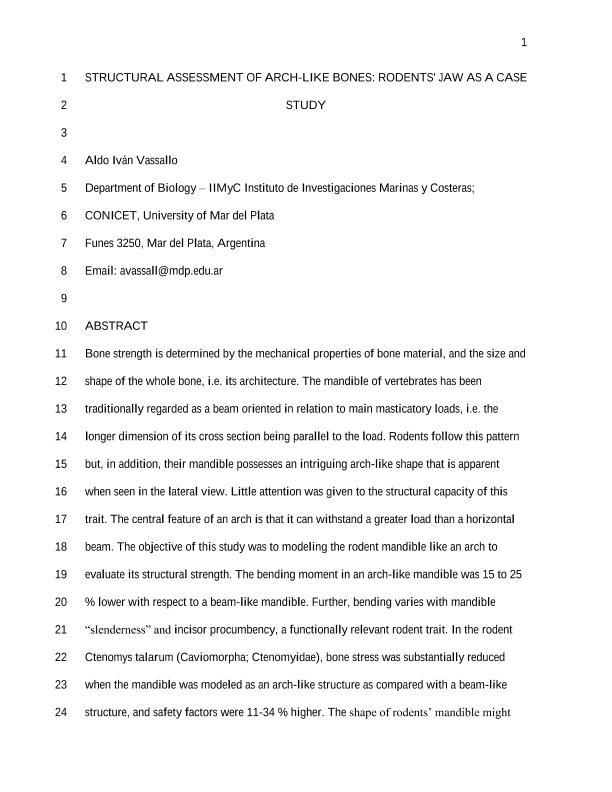Artículo
Analysis of arch-like bones: The rodent mandible as a case study
Fecha de publicación:
07/2016
Editorial:
John Wiley and Sons Inc.
Revista:
Journal of Morphology
ISSN:
1097-4687
Idioma:
Inglés
Tipo de recurso:
Artículo publicado
Clasificación temática:
Resumen
Bone strength is determined by the mechanical properties of bone material, and the size and shape of the whole bone, i.e., its architecture. The mandible of vertebrates has been traditionally regarded as a beam oriented in relation to main masticatory loads, i.e., the longer dimension of its cross-section being parallel to the load. Rodents follow this pattern but, in addition, their mandible possesses an intriguing arch-like shape that is apparent when seen in the lateral view. Little attention was given to the structural capacity of this trait. The advantage of an arch is that it can withstand a greater load than a horizontal beam. The objective of this study was to model the rodent mandible like an arch to evaluate its structural strength. The bending moment in an arch-like mandible was 15-25% lower with respect to a beam-like mandible. Further, bending varies with mandible "slenderness" and incisor procumbency, a functionally relevant rodent trait. In the rodent Ctenomys talarum (Caviomorpha; Ctenomyidae), bone stress was substantially reduced when the mandible was modeled as an arch-like structure as compared with a beam-like structure, and safety factors were 15-34% higher. The shape of rodents' mandible might confer a functional advantage to high and repeatedly applied loads resulting from a unique feeding mode: gnawing.
Palabras clave:
Biomechanics
,
Bone Architecture
,
Caviomorpha
,
Ctenomys
,
Jaw
Archivos asociados
Licencia
Identificadores
Colecciones
Articulos(IIMYC)
Articulos de INSTITUTO DE INVESTIGACIONES MARINAS Y COSTERAS
Articulos de INSTITUTO DE INVESTIGACIONES MARINAS Y COSTERAS
Citación
Vassallo, Aldo Iván; Analysis of arch-like bones: The rodent mandible as a case study; John Wiley and Sons Inc.; Journal of Morphology; 277; 7; 7-2016; 879-887
Compartir
Altmétricas




